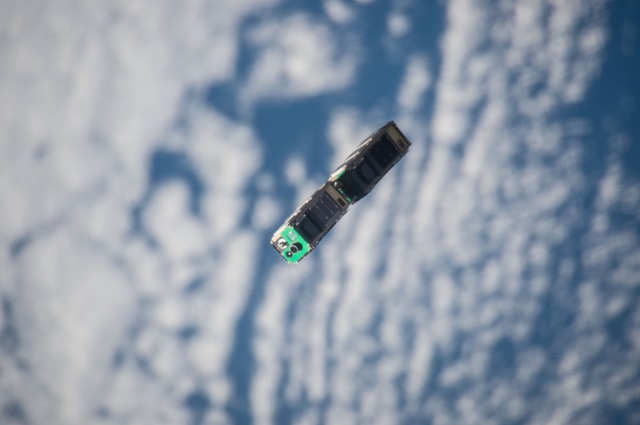 Sea State
Sea State
China’s naval capacity received a big boost this past week with the People’s Liberation Army Navy (PLA-N) adding not one but two vessels to its fleet. The PLA-N launched a Type 052D Luyang III class guided missile destroyer in early August. The Type 052D has been dubbed the ‘Chinese Aegis’ by observers based on the similarities in sensors and weapons to the US Navy’s Arleigh Burke class Aegis destroyers. This vessel is the ninth of its class to be launched and satellite images of Chinese shipyards suggest that four more vessels are in various stages of construction. The other recent addition is a Type 051B Luhai-class destroyer set to re-join the PLAN’s South Sea fleet after an eight month substantial upgrade to its combat systems.
Eight Japanese Maritime Self-Defense Force ships visited Mumbai this past weekend to conduct a joint passage exercise (‘PASSEX’) with the Indian Navy. The PASSEX exercise is designed to enhance interoperability and strengthen ties between the two navies. It comes on the heels of the 2016 Malabar Exercise in the Philippine Sea in June, which also included the US Navy. The three countries recently vowed to boost defence cooperation at the Shangri-La Dialogue in Singapore.
Ever wondered how US Navy SEALs got their name? Check out this sneak peek at the SEALs’ underwater jet boots.
Flight Path
In response to a US Navy request to Boeing, the P-8A Poseidon maritime patrol aircraft is receiving its third round of upgrades, expected to reach initial operational capability by 2020. The latest contract will see the installation of new software— the Minotaur Track Management system—which will increase the Poseidons’ capability to correlate data from submarine and surface vessels detection systems. A little closer to home, the RAAF will acquire up to 15 Poseidons by the late 2020s, with the first making its first (non-operational) earlier this year.
Lockheed Martin has confirmed two successful flight tests of its upgraded Dual Mode Plus Laser Guided Bomb (DMLGB) at China Lake Test Range, California. With the deadly (and affordable) combination of semi-active laser seeker technology and INS/GPS navigation, the DMLGB is said to increase precision in all weather, reducing the risk of collateral damage.
The US State Department has approved a potential Foreign Military Sale of precision-guided munitions, including air-dropped bombs, worth US$231 million, to NATO. NATO’s request came after the US Government’s 2015 announcement of a two year pilot project aimed at pooling resources amongst NATO and member countries for weapons purchase. The US Defense Security Cooperation Agency confirmed the weapons would be transferred to eight countries, including Spain, Portugal and Denmark. The US would welcome such purchases, after NATO’s warstocks proved too small during previous operations.
And finally, we know the concept of safety in numbers is popular with drone deployment, but this F-22 Raptor got itself into a ‘sticky’ situation after encountering a different kind of swarm.
Rapid Fire
With all eyes on the Rio Olympics, you’d be forgiven for failing to notice the other international battle of the fittest playing out in Russia. The annual International Army War Games 2016 wound up in Moscow over the weekend. 121 teams from 20 countries—including China, India, Iran and Greece—competed in 23 military disciplines including field, air and marine-based events. Click here for a gallery of the action.
China used the event to showcase the latest addition to its military hardware—an upgraded third generation ZTZ-96 main battle tank. Christened ‘ZTZ-96B’, the Chinese have thus far kept mum about their new acquisition. According to Franz-Stegan Gady, senior fellow at the EastWest Institute, the Type-96B variant boasts improved communications, with purported improvements to the exhaust system, suspension, running wheels, and may include a new engine. Have a gander at the new tank here.
Russia has increased its military presence on Ukraine’s border in response to an alleged attempt by Ukranian special forces to infiltrate Crimea. Between 7–12 August, Russia deployed additional ground forces, naval and air units, and military hardware on the northern, eastern, and southern borders (mapped here). Ukraine has placed its border forces on combat alert, while calling upon the UN Security Council to convene to address Russia’s actions. Analysts at ISW have suggested the escalation indicates an increasing likelihood of open war.
Zero Gravity
The China Aerospace Science and Technology Corporation has announced work on a hybrid hypersonic spaceplane to replace its space shuttles. China envision a plane that takes off with conventional turbofans and then switches to ramjet propulsion before engaging a scramjet at supersonic speeds to push it into space. Zhang Yong, a CASTC engineer, said that China will develop the necessary technologies over the next 3 to 5 years, and that a spaceplane would enter service by 2030.
Australian scientists from ANU, the USyd and UNSW have built three CubeSat micro-satellites as part of the QB-50 project to study the atmosphere’s least understood layer, the thermosphere, between 200–380km altitude. Ultra-violet and x-ray radiation from the sun can disrupt the thermosphere, affecting GPS, radar and satellite communications. The CubeSats will be sent to the International Space Station on an Orbital ATK Antares rocket and in December, they’ll be released into the thermosphere.
Taking a slightly different approach, the US Airforce is seeking help to create plasma bombs that can be detonated from CubeSat’s in the earth’s ionosphere. It’s hoped that the plasma generated from the explosions will supercharge ions, making the ionosphere more reflective and extending the range of radio communications and radar.

